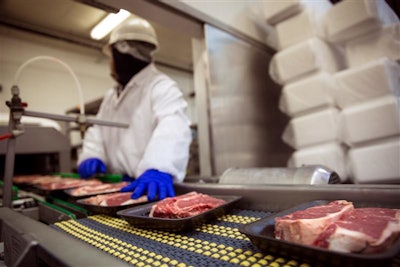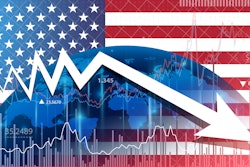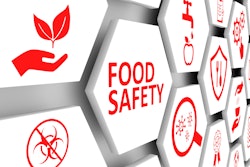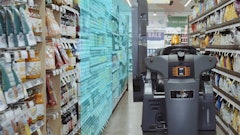
The UN projects that Earth will support 10 billion people by 2050, prompting big questions about how to feed a growing population on minimal arable land. Techniques like indoor farming, vertical farming and automated greenhouses will be key to producing the amount of food needed to sustain our future population. These approaches emphasize sustainability while minimizing health and safety risks. Perhaps most of all, these methods are ideal avenues for introducing automation.
Technologies and techniques that introduce intelligent automation into food production and distribution can help maximize efficiency to boost food production and minimize waste, whether in novel farming forms or traditional manufacturing plants.
Current food supply chains are wasteful and unsustainable
In 2012, the World Wildlife Fund for Nature predicted that humanity must produce as much food by 2050 as it has during the past 8,000 years of agriculture to sustain population-growth forecasts. But current farming practices are at odds with that future. Agriculture currently accounts for nearly half of all habitable land use. Increasing food production with current farming methods requires increasing land use, necessarily cutting down on forest land or land where humans live or will need to live.
Moreover, not all humans live or will live near arable land. Moving food from farmland to table requires an extensive supply chain. Unfortunately, today’s food transportation systems are wrought with challenges. Fourteen percent of food waste occurs before produce even hits retail shelves.
Besides food waste, the supply chain places enormous pressure on the climate. In the United States alone, cold chain transport for meat emits 7.1 million tons of CO2 and more than 12 million tons of CO2 for prepared foodstuffs, annually. That’s just national transport. As developing nations — many of them with little arable land — grow, they’ll need to import the requisite volumes. The UN Food and Agriculture Organization (FAO) predicted, for example, that developing countries will need to double their net cereal imports between 2009-2050.
That sort of distance presents another major challenge to the global food supply. Supply chain networks are intricate webs, and each additional mile stretches the fibers tighter. Disruptions like pandemics or supply issues test the resilience of these webs. Less resilient systems fray and even break altogether.
Companies have introduced innovative solutions to tackle some of these challenges. Indoor, vertical and greenhouse farming make more efficient use of space and help grow produce closer to its final destination. Yet, these controlled-environment agriculture (CEA) systems still require capital, energy and manpower to operate, all of which are in short supply today. As a result, the food industry is in dire need of further innovation.
Automate, innovate and optimize for more resilient food supply chains
The next puzzle piece that must fall into place to sustain the future of food is automation, which, in tandem with CEA installations, offers many benefits.
Human activity in a controlled environment introduces the risk of contamination, leading to food loss. To combat the propensity for human error, agricultural companies often use chemicals to ward off fungi and bacteria. Automating tasks inside these environments limits human activity, mitigating the risk of contamination and reducing the need for chemicals.
CEA is vital to the future of food because controlled environments can grow food in non-arable areas and outside of typical growing seasons. To offer these capabilities, CEAs carefully control humidity, light, water consumption and air leakage, among other activities. Each of these processes requires reliable power so that the enclosure remains pristine around the clock. As climate computers continue to get smarter, they enable CEA enclosures to grow more and different products with different and often fewer resources.
With automation-enabling technology, CEA operators can also better monitor energy consumption of every moving piece in their units. Efficient energy use is the cornerstone of the CEA sustainability value proposition. Automation allows operators to sustainably maximize their operations’ outputs. In short, it’s difficult to maintain the eponymous control in these environments without automated tools optimizing conditions.
Each CEA unit is just the beginning of the supply chain, however, and automation can play a role in optimizing the subsequent steps of food distribution. Automation-enabling technology offers tighter data integration throughout the entire food supply chain, effectively turning it into a connected system. When food is tracked from the moment it drops off the vine, through scanning and warehousing to delivery, it becomes easier to optimize every piece of the chain and limit waste.
The future of food requires a mindset shift
As consumers become more conscious of food sources, demand for a home-grown and sustainable food supply grows. Yet, locally grown food simply isn’t possible in many areas. And, getting food to non-arable locales not only irritates end-customers, but it stresses food supply chains and, in the event of major disruptions, can even break those that aren’t resilient. Despite this agricultural landscape, we must find ways to feed the 2-3 billion additional people who will soon populate the planet.
Accomplishing this feat is only possible with novel farming approaches like controlled-environment agriculture. Leveraging this paradigm also requires a mindset shift away from maximizing product and toward minimizing food waste. It may be a difficult shift to enact, but it’s a necessary one, made all the more possible by innovative technologies. For a sustainable future of food, we need automation, and we need it fast.




















